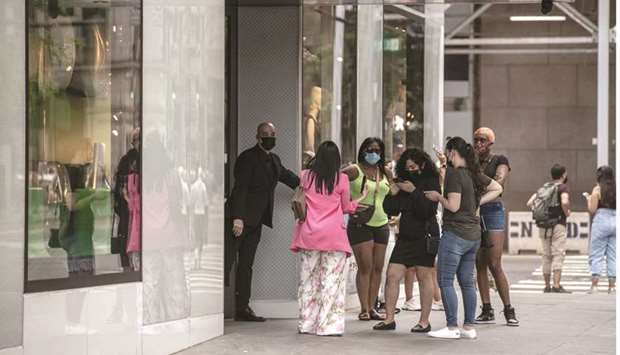US consumer prices surged in April, with a measure of underlying inflation blowing past the Federal Reserve’s 2% target and posting its largest annual gain since 1992, reflecting pent-up demand as the economy reopens.
The strong inflation readings reported by the Commerce Department yesterday had been widely anticipated as the Covid-19 pandemic’s grip eases, thanks to vaccinations, and will have no impact on monetary policy.
Fed chair Jerome Powell has repeatedly stated that higher inflation will be transitory, with supply chains expected to adapt and become more efficient.
Most economists share the US central bank chief’s views.
The supply constraints largely reflect a shift in demand towards goods and away from services during the pandemic.
Inflation is also accelerating as last spring’s weak readings drop from the calculation.
“The central bank is going to look through the acceleration in inflation, for now,” said Ryan Sweet, a senior economist at Moody’s Analytics in West Chester, Pennsylvania.
Consumer prices as measured by the personal consumption expenditures (PCE) price index, excluding the volatile food and energy components, increased 0.7% last month.
That was the biggest rise in the so-called core PCE price index since October 2001 and followed a 0.4% gain in March.
In the 12 months through April, the core PCE price index vaulted 3.1%, the most since July 1992, after rising 1.9% in March.
Economists polled by Reuters had forecast the core PCE price index rising 0.6% in April and surging 2.9% year-on-year.
The core PCE price index is the Fed’s preferred inflation measure.
Year-on-year readings could remain higher for a while because of the so-called base effects before subsiding later this year.
US stocks opened higher.
The dollar rose against a basket of currencies.
US Treasury prices were lower.
Though consumer spending moderated last month as the boost to incomes from stimulus checks faded, households have accumulated at least $2.3tn in excess savings during the pandemic, which should underpin demand.
Wages are also rising as companies seek to attract labour to increase production.
Generous unemployment benefits funded by the government, problems with child care and fears of contracting the virus, even with vaccines widely accessible, as well as pandemic-related retirements have left companies scrambling for labour.
That is despite nearly 10mn Americans being officially unemployed.
Consumer spending, which accounts for more than two-thirds of US economic activity, rose 0.5% last month.
Data for March was revised higher to show spending surging 4.7% instead of 4.2% as previously reported.
The rise in spending was in line with expectations.
Spending was held back by a 0.6% drop in outlays on goods.
Though purchases of long-lasting goods such as motor vehicles rose 0.5%, spending on nondurable goods tumbled 1.3%. Outlays on services increased 1.1%. When adjusted for inflation, consumer spending slipped 0.1% after jumping 4.1% in March.
Despite last month’s dip in the so-called real consumer spending, March’s solid increase put consumption on a higher growth trajectory in the second quarter.
Consumer spending powered ahead at a 11.3% annualised rate in the first quarter, contributing to the economy’s 6.4% growth pace.
Most economists expect double-digit growth this quarter, which would position the economy to achieve growth of at least 7% this year, which would be the fastest since 1984.
The economy contracted 3.5% in 2020, its worst performance in 74 years.
Personal income plunged 13.1% in April after surging 20.9% in March.
With spending exceeding income, the saving rate dropped to a still-high 14.9% from 27.7% in March.
Wages increased 1.0%, matching March’s gain.

Shoppers wait to enter the Louis Vuitton store on Fifth Avenue in New York. The strong inflation readings reported by the Commerce Department yesterday had been widely anticipated as the Covid-19 pandemic’s grip eases, thanks to vaccinations, and will have no impact on monetary policy.


